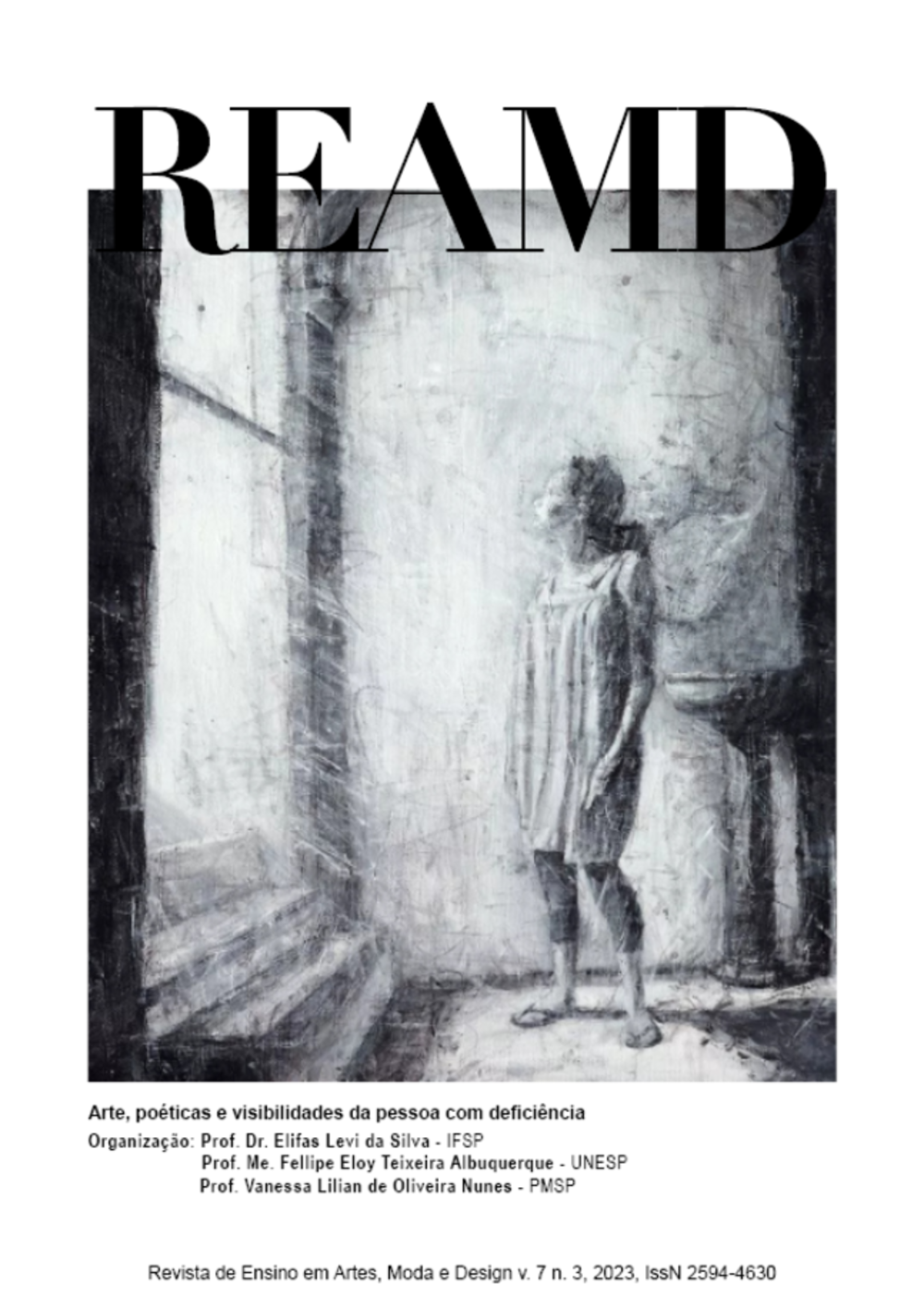How blind people relate to the visual arts?: a case study on artistic references, accessibility and aesthetic fruition
DOI:
https://doi.org/10.5965/25944630732023e3896Keywords:
visual impairment, visual arts, accessibilityAbstract
This article presents the results obtained in a research on the reception of visually impaired people to the visual arts, investigating the repertoire of known works, the current state of accessibility, as well as reports of aesthetic experiences. This case study, a quali-quantitative research, was carried out through a survey with people with visual impairments, most of them attendees of the Benjamin Constant Institute, a century-old institution located in the city of Rio de Janeiro. The results revealed artistic references mostly of European origin, with the aggravating factor that their forms are unknown, that is, there was no intermediation through audio description (AD) and/or tactile material. Regarding accessibility in museums and cultural institutions, the results point to the lack of opportunities and carelessness with this audience. In the case of so-called inclusive events, the inefficiency of audio description as a unique accessibility resource for the visual arts was observed, emphasizing the importance of touching tactile materials with their respective audio description. The tactile perception of sculptures proved to be a powerful catalyst for aesthetic fruition, justifying the defense of the possibility of touching originals of three-dimensional works for people with visual impairments.
Downloads
References
BARBOSA, A. M. A imagem no ensino da arte: anos 80 e novos tempos. São Paulo: Perspectiva, 2009.
BENJAMIN, W. A Obra de arte na época de sua reprodutibilidade técnica. In: ADORNO, T. et al. Teoria da cultura de massa. Rio de Janeiro: Paz e Terra, 1978.
CARIJÓ, F. H.; MAGALHÃES, J. M. Q.; ALMEIDA, M. C. Acesso tátil: uma introdução à questão da acessibilidade estética para o público deficiente visual nos museus. In: KASTRUP, V.; MORAES, M. (org.). Exercícios de ver e não ver: arte e pesquisa com pessoas com deficiência visual. Rio de Janeiro: Nau, 2010.
FRANCO, E. P. C.; SILVA, M. C. C. C. Audiodescrição: breve passeio histórico. In: MOTTA, L. M. V. M.; ROMEU-FILHO, P. (org.). Audiodescrição: transformando imagens em palavras. São Paulo: Secretaria dos Direitos da Pessoa com Deficiência do Estado de São Paulo, 2010, p. 23-42. Disponível em: http://www.pessoacomdeficiencia.sp.gov.br/usr/share/documents/LIVRO_AUDIODESCRICAO_TRANSFORMANDO_IMAGENS_EM_PALAVRAS.pdf. Acesso em: 6 mar. 2022.
GROSS, L., Arte e Inclusão: o Ensino da Arte na inclusão de alunos com deficiência visual no Colégio Pedro II. Tese (doutorado) - Universidade Federal do Rio de Janeiro, Faculdade de Educação, Programa de Pós-Graduação em Educação, 2015.
GROSS, L.; NOGUEIRA, M. A. Ensino da Arte e Inclusão: Relatos de alunos com deficiência visual em aulas de Artes Visuais no Colégio Pedro II. Revista Educação, Artes e Inclusão v. 12, n. 3, 2016, p. 33-59. Disponível em: http://www.revistas.udesc.br/index.php/arteinclusao/article/view/ 7890/pdf. Acesso em: 18 jun. 2022.
GROSS, L.; NOGUEIRA, M. A. OBRAS-PRIMAS DASARTES VISUAIS: o que pessoas cegas têm a dizer sobre esse tema? In: SANTOS JÚNIOR, E.A.; BRAGA, L.P.S.; MELLO, M.N. (org.). Conectando Conhecimentos, Vol. II, Textos referentes às palestras e trabalhos apresentados nas edições de VI a IX do Seminário, Rio de Janeiro: Instituto Benjamin Constant, 2021. ISBN: 9786500312188. Disponível em: https://www.gov.br/ibc/pt-br/pesquisa-e-tecnologia/publicacoes-do-ibc-1/livros_pdf/anexos/conectando-conhecimentos_vol_ii___.pdf. Acesso em: 01 maio 2022.
KASTRUP, V. Experiência estética para uma aprendizagem inventiva: notas sobre a acessibilidade de pessoas cegas a museus. Informática na Educação: Teoria & Prática, Porto Alegre, v. 13, n. 2, p. 38-45, jul./dez. 2010.
MOREIRA, H.; CALEFFE, L.G. Metodologia da pesquisa para o professor pesquisador. Rio de Janeiro: Lamparina, 2008.
REBEL, E. Ikonen der Bildgedächtnisses (Ícones da Memória Imagética). Seminário proferido no curso de Pedagogia da Arte. Universidade Ludwig-Maximilian, Munique, 2002.
REBEL, E. Sehen und Sagen: Das Öffnen der Augen beim Beschreiben der Kunst, Ostfildern: Ed. Tertium, 1996.
Downloads
Published
How to Cite
Issue
Section
License
Copyright (c) 2023 Leila Gross, Monique Andries Nogueira

This work is licensed under a Creative Commons Attribution 4.0 International License.
- Authors retain copyright and grant the journal the right of first publication, with work simultaneously licensed under the Creative Commons Attribution 4.0 International License, which allows for:
1. Share — copy and redistribute the material in any medium or format for any purpose, even commercially.
2. Adapt — remix, transform, and build upon the material for any purpose, even commercially.
The licensor cannot revoke these freedoms as long as you follow the license terms.Under the following terms:
1. Attribution — You must give appropriate credit, provide a link to the license, and indicate if changes were made. You may do so in any reasonable manner, but not in any way that suggests the licensor endorses you or your use.
2. No additional restrictions — You may not apply legal terms or technological measures that legally restrict others from doing anything the license permits. -
Plagiarism, in all its forms, constitutes unethical publication behavior and is unacceptable. This magazine uses iThenticate similarity control software.






